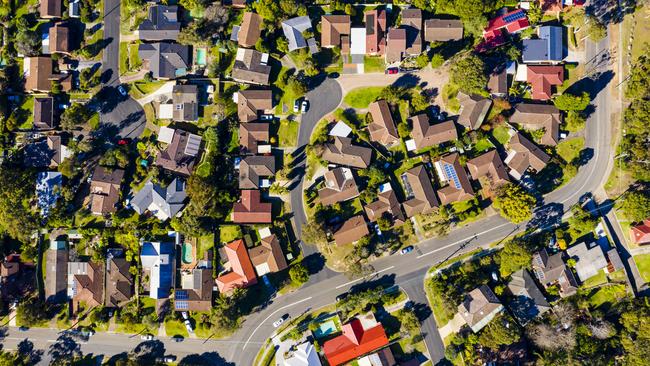Suburban bliss is back — but with a transport twist
The ’burbs will boom and the inner cities will suffer as millennials move out to rear kids and work from home.

Because of their sheer size and stage in the life cycle, no generation will shape Australia more during the 2020s than millennials.
Millennials were born between 1982 and 1999. This makes them aged 21 to 38, and they will be 31 to 48 by 2030. Millennials perfected the art of procrastination as they popularised the gap year, forgot to move out of the parental home, pursued education for much longer, settled for a partner much later in life, and pushed out buying their first home and birth of their first child into their mid-30s.
Throughout the 2020s, this generation of procrastinators will follow in the footsteps of every generation before them and enter the family-formation and home-buying stage.
As life pushes you forwards, preferences change. Throw a newborn into the mix and even the hippest inner-city couple gives in and follows the suburban sirens. Throughout the 2020s, millennials will leave their centrally located one or two-bedroom apartments and migrate to the suburbs or even regional centres in search of more bedrooms. They want an additional bedroom or two to bring up the kids and to work from home occasionally.
The suburban siren call is a severe problem for the inner-city residential property market.
Who will move into the inner-city apartments left behind by the millennials? The first lot of Generation Z (born 2000-17) is coming of age now. Surely Zs were meant to take over the apartments from the millennials. Many Zs will indeed move to the inner city for university education, to be close to the awkwardly hygienic post-corona night-life scene and the office towers of their first employers. The problem is that the Zs are a much smaller generation than the millennials and, with lower migration intake because of the coronavirus during the next few years, inner-city landlords won’t see the expected growth.
Once millennials settle in their new suburban neighbourhoods, they will move heaven and earth to avoid the soul-destroying commute back into the inner city. “I paid good money to leave the CBD behind, I sure as hell won’t spend an hour going back there every day.” The millennial knowledge workers will be working from home much more regularly. We even may see secondary employment hubs grow more strongly to allow people to work near home.
Working from home became widely accepted in Australia during the lockdown. Asking staff to work from the office now may be difficult. Plus young millennial families will be keen to have both parents at home during the first few years of child-rearing.
Workers get to stay home and businesses need to spend less on expensive office space — all is fine in paradise. But someone always must foot the bill. In this case it is the commercial property players. The struggle will be only temporary. Once the Australian economy kicks back into gear, new jobs will be created at scale and most will be based in the inner city.
How will the newly settled suburban millennials reshape their new neighbourhoods? Public transport may be shunned by the well-to-do for hygiene concerns. If our local and state governments allow public transport use to fall without providing cheap alternatives, it could be a recipe for permanent gridlock on the roads.
Let’s just double down on public transport then. After all, public transport moves masses of people more efficiently than any other form of transport. But in times of social distancing and an increased focus on public hygiene, public transport loses some of its appeal. The answer will not be the car but reimagining suburbia.
The smart move, and urbanists around the world are suggesting just this, would be for councils to reshape local transport strategies to accommodate micro-mobility solutions. We are talking about walkable neighbourhoods where most daily needs (supermarkets, gyms, doctors, libraries, hairdressers) are in comfortable walking or cycling distance. Infrastructure prioritises active transport (cycling, walking) and accommodates novel solutions such as electric scooters. Most suburbanites still own cars, of course, but smaller everyday trips shift to walking or cycling. In neighbourhoods with truly safe cycling infrastructure (think Denmark, The Netherlands or Germany) older children can cycle unsupervised to their sporting lessons. The parental fantasy of being released from constant chauffeur duty might become reality in the new suburbia.
Millennials will reimagine suburbia. They will champion a revamped local transport infrastructure, houses large enough to work from home and rear kids, and friendly local neighbourhoods. In a world such as this, it’s easy to see why millennials will kiss their smashed-avo lifestyle goodbye and emulate the suburban bliss (with a sustainable, active transport twist) in which their baby-boomer parents reared them.




To join the conversation, please log in. Don't have an account? Register
Join the conversation, you are commenting as Logout